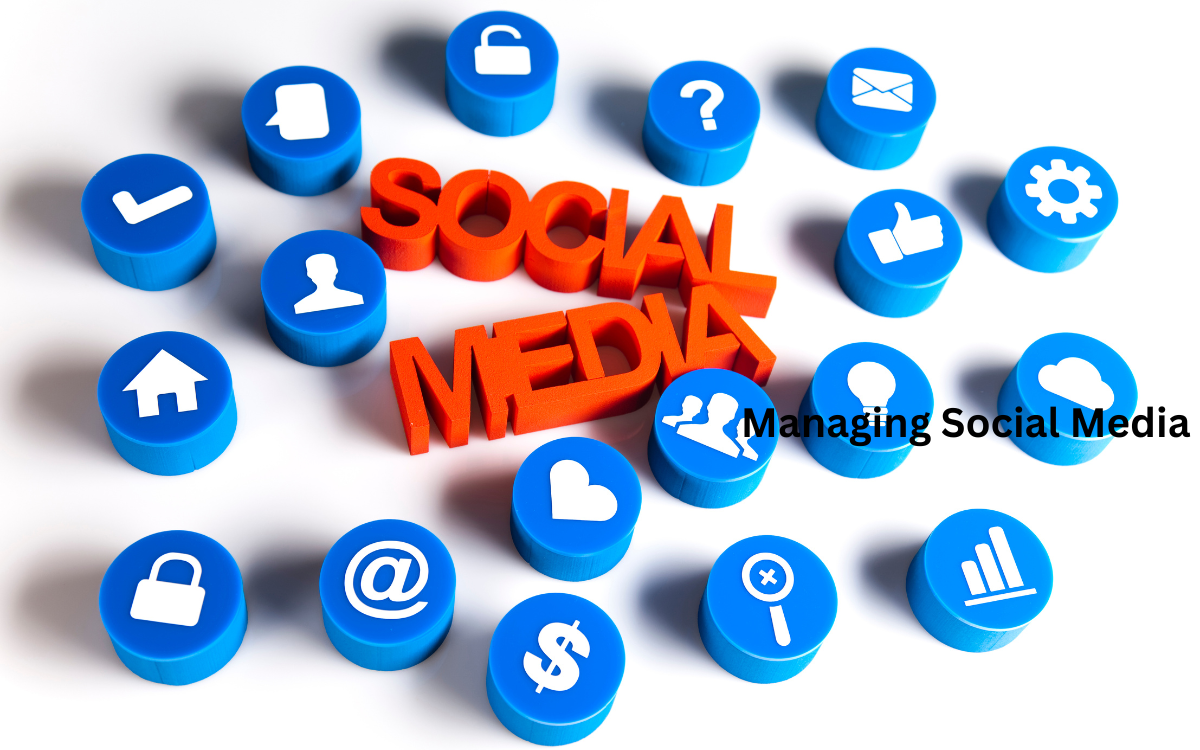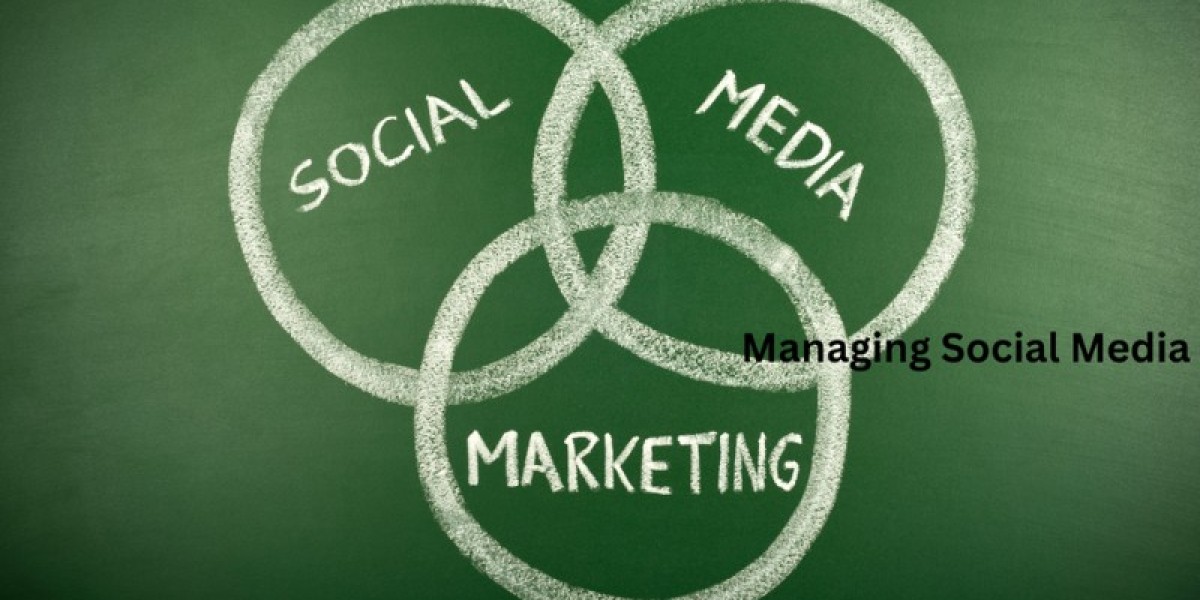In today’s digital-driven world, managing social media effectively has become a vital necessity for businesses, personal brands, influencers, and organizations. With over 4.9 billion active social media users worldwide (as of 2025), platforms like Facebook, Instagram, LinkedIn, TikTok, and X (formerly Twitter) offer unparalleled opportunities to connect with target audiences, increase brand visibility, drive traffic, and generate leads.
This post will walk you through every aspect of successful social media management, including strategy development, content creation, platform-specific approaches, analytics, and emerging trends.
What is Social Media Management?
Social media management involves the process of creating, publishing, promoting, and monitoring content across various social media platforms to achieve branding, marketing, and communication goals.
Core Elements of Social Media Management:
Content Strategy Development
Platform Selection & Optimization
Audience Engagement
Analytics & Performance Tracking
Paid Social Media Campaigns
Importance of Social Media Management for Businesses
| Benefits of Social Media Management | Impact on Business Growth |
|---|---|
| Increased Brand Awareness | Wider reach to new customers and audiences. |
| Improved Customer Engagement | Real-time communication builds loyalty. |
| Higher Website Traffic | Directs qualified leads to the website. |
| Cost-Effective Marketing | Affordable alternative to traditional media. |
| Enhanced SEO Performance | Social signals influence search engine ranking. |
Key Components of Successful Social Media Management
1. Social Media Strategy Development
Steps to Build a Winning Strategy:
Define clear objectives (brand awareness, lead generation, sales)
Identify target audience personas
Select the right platforms (based on audience & goals)
Develop a content calendar
Set Key Performance Indicators (KPIs)
Example Social Media Goals Table:
| Goal | Metric | Platform Example |
|---|---|---|
| Increase Engagement | Likes, Shares, Comments | Instagram, Facebook |
| Drive Website Traffic | Click-Through Rate (CTR) | LinkedIn, X |
| Lead Generation | Conversion Rate | Facebook, LinkedIn Ads |
2. Content Planning and Creation
A well-structured content plan ensures consistent posting and relevance.
Content Types:
Educational Posts: Blogs, Tips, How-To Guides
Entertaining Posts: Memes, Fun Facts, Quizzes
Promotional Posts: Product Highlights, Offers
User-Generated Content: Reviews, Testimonials
Content Calendar Example (Weekly):
| Day | Content Type | Platform |
|---|---|---|
| Monday | Industry News Update | |
| Tuesday | Tips/How-To Post | |
| Wednesday | Product Feature | |
| Thursday | User Testimonial Video | TikTok |
| Friday | Fun Meme/Trivia | X (Twitter) |
3. Platform-Specific Approaches
Every platform has its strengths:
Facebook:
Best for B2C marketing.
Use groups, stories, and ads for community building.
Instagram:
Visually-driven.
Ideal for reels, stories, influencer collaborations.
LinkedIn:
Best for B2B and professional services.
Share case studies, whitepapers, career opportunities.
TikTok:
Trend-driven, entertainment-heavy.
Great for viral challenges and youth-focused brands.
X (Twitter):
Real-time updates, trending discussions.
Utilize threads, polls, and Twitter Spaces.
4. Community Engagement
Best Practices:
Respond to comments & messages quickly.
Use interactive content (polls, Q&As).
Address negative feedback politely and professionally.
5. Paid Social Media Advertising
Running targeted ads amplifies reach and conversions.
Paid Campaign Types:
Facebook/Instagram Ads: Carousel, Video, Collection
LinkedIn Ads: Sponsored Content, InMail
TikTok Ads: In-Feed Video, Brand Takeover
X Ads: Promoted Tweets, Trends
Example: Social Media Ad Performance Chart
| Platform | CTR (%) | CPC (USD) | Conversion Rate (%) |
|---|---|---|---|
| 1.20 | 0.80 | 9.5 | |
| 1.10 | 1.00 | 8.7 | |
| 0.55 | 3.50 | 12.3 | |
| TikTok | 1.50 | 0.70 | 7.9 |
| X (Twitter) | 0.90 | 0.60 | 6.5 |
6. Social Media Analytics and Reporting
Regular analysis helps improve future campaigns.
Key Metrics:
Engagement Rate
Reach & Impressions
Follower Growth
Click-Through Rate (CTR)
Return on Ad Spend (ROAS)
Social Media Reporting Sample Table:
| Metric | Value | Change vs Last Month |
|---|---|---|
| Total Impressions | 150,000 | +12% |
| Engagement Rate (%) | 4.8 | +0.5% |
| New Followers | 2,300 | +15% |
| Website Traffic (from social) | 8,500 | +10% |
Tools for Efficient Social Media Management
| Tool Name | Purpose | Pricing |
|---|---|---|
| Hootsuite | Scheduling & Analytics | Freemium |
| Buffer | Content Scheduling | Freemium |
| Canva | Graphics & Post Design | Free/Paid |
| Sprout Social | Advanced Analytics & CRM | Paid |
| Meta Business Suite | Facebook & Instagram Ads | Free |
Common Social Media Management Mistakes to Avoid
Ignoring Analytics: Not tracking performance metrics can result in poor content decisions.
Inconsistent Posting: Irregular updates confuse your audience and hurt engagement.
Over-Promotion: Hard-selling alienates followers; balance value-driven and promotional content.
Lack of Audience Understanding: Not tailoring content to the audience leads to low engagement.
Neglecting Emerging Platforms: Ignoring new trends like Threads or BeReal may result in missed opportunities.

Future Trends in Social Media Management (2025 & Beyond)
| Trend | Impact on Management |
|---|---|
| AI-Powered Content Creation | Automated post generation using AI |
| AR & VR Integration | Immersive, interactive brand experiences |
| Voice Search Optimization | New way of discovering social content |
| Social Commerce Growth | Shopping directly via social platforms |
| Short-Form Video Dominance | Reels, Shorts, and TikToks leading engagement |
How to Create a Social Media Crisis Management Plan
No social media strategy is complete without preparing for unexpected situations. Whether it’s negative reviews, viral misinformation, or PR disasters, having a Social Media Crisis Management Plan is crucial.
Steps to Build a Crisis Management Plan:
Identify Potential Risks
List possible risks such as data breaches, offensive posts, or unsatisfied customer complaints.Establish a Crisis Team
Assign roles for PR specialists, social media managers, and legal advisors.Set a Clear Protocol
Define the process for acknowledging, addressing, and resolving public issues swiftly.Pre-approve Statements
Have ready-to-use public response templates for fast deployment.Monitor Social Media in Real-Time
Use tools like Mention or Brand24 to spot emerging issues.
Example Crisis Response Template:
“Thank you for bringing this to our attention. We take this matter seriously and are investigating immediately. We’ll provide an update shortly. Your feedback is important to us.”
ROI Calculation for Social Media Management
Understanding the Return on Investment (ROI) is essential to measure the effectiveness of your social media efforts.
Formula for Social Media ROI:
ROI=(Return−Investment)Investment×100\text{ROI} = \frac{(\text{Return} – \text{Investment})}{\text{Investment}} \times 100
Example ROI Calculation Table:
| Campaign | Total Spend (USD) | Revenue Generated (USD) | ROI (%) |
|---|---|---|---|
| Facebook Ads | 500 | 1,500 | 200% |
| Instagram Reels | 300 | 800 | 166.7% |
| LinkedIn Outreach | 400 | 1,200 | 200% |
Social Media Management Checklist
Here’s a handy checklist every business should follow to ensure comprehensive social media management:
Define SMART Goals (Specific, Measurable, Achievable, Relevant, Time-bound)
Know Your Audience
Choose the Right Platforms
Create a Consistent Posting Schedule
Design Visually Appealing Content
Engage with Your Followers
Monitor & Analyze Performance
Adjust Strategy Based on Data
Prepare for Crisis Management
Stay Updated with Social Media Trends
Emerging Social Media Platforms to Watch in 2025
| Platform Name | Feature Highlight | Potential for Businesses |
|---|---|---|
| Threads (Meta) | Text-based micro-blogging | B2C brand storytelling |
| BeReal | Authentic, unfiltered photos | Gen Z audience connection |
| Lemon8 | Lifestyle content & reviews | Influencer partnerships |
| Clubhouse 2.0 | Audio-based social networking | Live Q&A, expert panels |
Keeping an eye on these platforms can give businesses an early mover advantage.
The Role of AI and Automation in Social Media Management
With the rapid advancement of technology, AI tools are transforming social media management processes.
AI Use Cases in Social Media:
Automated Content Creation
Tools like Jasper or Copy.ai can draft captions, blogs, and ad copy.Scheduling & Posting Automation
Buffer, Hootsuite, and Later allow seamless cross-platform post scheduling.Chatbots for Customer Service
AI-powered bots on Facebook Messenger or WhatsApp handle FAQs and order updates 24/7.Predictive Analytics
AI can analyze historical data to forecast audience behavior and content performance.
Sample Chart: Impact of AI on Social Media Tasks
| Task | Manual Time (hrs/week) | With AI Automation (hrs/week) | Time Saved (%) |
|---|---|---|---|
| Content Generation | 5 | 2 | 60% |
| Scheduling Posts | 3 | 1 | 66% |
| Customer Response | 6 | 2 | 66% |
| Data Analysis & Reports | 4 | 1 | 75% |
Social Media Influencer Collaboration Strategies
Working with influencers can skyrocket a brand’s online presence.
Types of Influencers:
| Influencer Type | Follower Range | Best For |
|---|---|---|
| Nano | 1K – 10K | Local businesses, high engagement |
| Micro | 10K – 100K | Niche brands, targeted campaigns |
| Macro | 100K – 1M | National brands, wide exposure |
| Mega/Celebrity | 1M+ | Major brand campaigns, global reach |
Tips for Influencer Marketing:
Choose influencers aligned with your brand values.
Set clear deliverables and KPIs.
Track performance metrics (reach, engagement, conversions).
Social Media Management for Different Industries
Retail:
Shoppable posts on Instagram and TikTok.
Flash sales promoted via stories.
B2B:
LinkedIn thought leadership articles.
Webinars and whitepapers shared via posts.
Healthcare:
Educational videos on YouTube.
Patient testimonials on Facebook.
Education:
Student success stories on Instagram Reels.
Virtual campus tours on YouTube.






